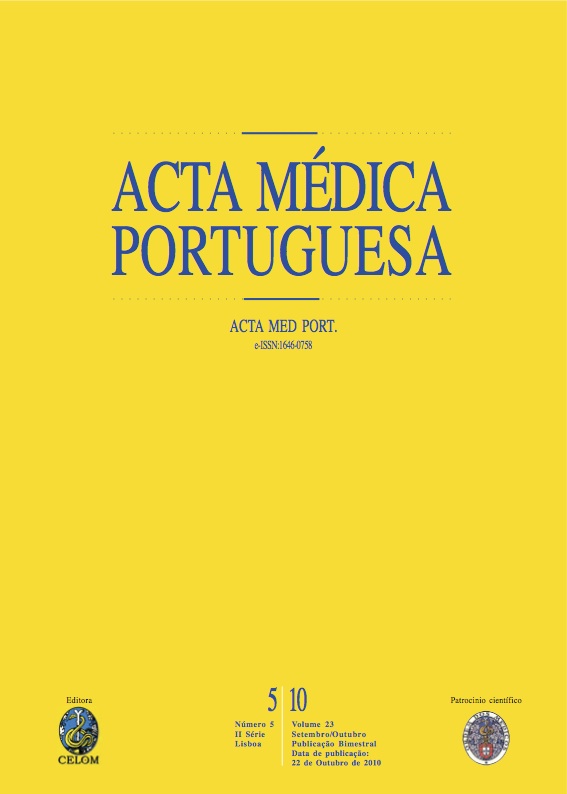Disorders of the neonatal liver and bile ducts.
DOI:
https://doi.org/10.20344/amp.727Abstract
Liver and biliary tract disorders in the neonate are relatively rare and often complex.To evaluate the incidence of neonatal liver and biliary tract disorders, main causes, clinical presentation, treatment and outcome. Material andClinical, imagiological, laboratory, pathological and autopsy data concerning all newborns with liver and biliary tract disorder admitted to the neonatal intensive care unit of five tertiary medical centers from the north of Portugal, between 1997 and 2006, were retrospectively analysed.77 neonates (incidence 0.5% - 77/14505 admissions); 44M/33F; gestational age 34 weeks (25-41); preterm 50 (65%); birthweight 1980 g (570-4130), < 1500 g 29 (38%). Several causes were identified and classified as infectious, metabolic, anatomic/structural, neoplastic, vascular, traumatic, immune, genetic and idiopathic. Clinical signs appeared between days 1 and 61 of life. Jaundice was the most frequent clinical sign (92%). Cholestasis occurred in 67 (87%) patients. Duration of hospital stay was 35 days (5-146); 18 patients (23%) were deceased. Autopsy study was diagnostic in 8 cases (10%).Nosocomial and intrauterine infection were the most common causes of liver and biliary tract disease. Several other rare causes represented an important challenge in diagnosis and treatment, and some were fatal. Awareness of the spectrum of liver and bile duct disorders in the neonate and recognition of the key clinical features are essential to optimize outcome.Downloads
Downloads
How to Cite
Issue
Section
License
All the articles published in the AMP are open access and comply with the requirements of funding agencies or academic institutions. The AMP is governed by the terms of the Creative Commons ‘Attribution – Non-Commercial Use - (CC-BY-NC)’ license, regarding the use by third parties.
It is the author’s responsibility to obtain approval for the reproduction of figures, tables, etc. from other publications.
Upon acceptance of an article for publication, the authors will be asked to complete the ICMJE “Copyright Liability and Copyright Sharing Statement “(http://www.actamedicaportuguesa.com/info/AMP-NormasPublicacao.pdf) and the “Declaration of Potential Conflicts of Interest” (http:// www.icmje.org/conflicts-of-interest). An e-mail will be sent to the corresponding author to acknowledge receipt of the manuscript.
After publication, the authors are authorised to make their articles available in repositories of their institutions of origin, as long as they always mention where they were published and according to the Creative Commons license.









